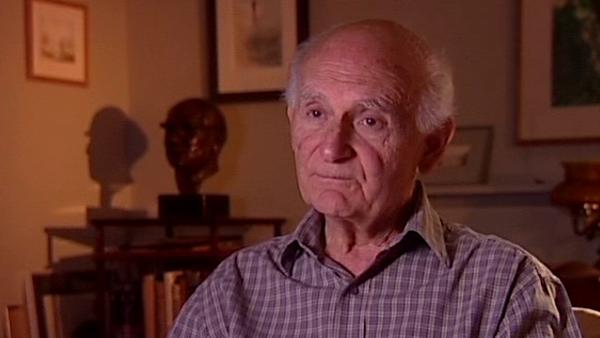NEXT STORY

Teachers: remembering the bad lessons
RELATED STORIES

NEXT STORY

Teachers: remembering the bad lessons
RELATED STORIES


|
Views | Duration | |
|---|---|---|---|
| 21. Working at the Central Middlesex Hospital | 118 | 01:12 | |
| 22. The life of a young doctor | 216 | 06:14 | |
| 23. Women in medicine in the 1940s | 137 | 01:37 | |
| 24. Teachers: remembering the bad lessons | 145 | 01:43 | |
| 25. Richard Asher, a brilliant diagnostician | 147 | 00:28 | |
| 26. Debating whether to work in paediatrics or in adult medicine | 108 | 03:07 | |
| 27. Diagosing smallpox | 132 | 04:58 | |
| 28. Eradicating smallpox | 127 | 04:37 | |
| 29. Identifying and isolating patients with smallpox | 121 | 06:00 | |
| 30. Interests in infection and transferable drug resistance | 91 | 03:16 |


UCH was one of the... one of the medical schools, one of the few which had always been co-ed from the beginning. There were some purely female, the Royal Free and the West London, I think it was called, and a lot of the traditional ones which were purely male, and there was a thing called the Good Enough Report, I think in 1946, which saw how grizzly medical schools were and made various recommendations including getting professorial units, which a lot of them didn't have, and also I think it said they should all be co-ed. So, I remember this very well because there wasn't a sort of feeling; men and women at UCH. There weren't as many women, I suppose. Well I, I don't actually remember, but 10, 20%, something like that, and I remember friends who had gone from Cambridge to other medical schools, came to have coffee with you or whatever, you know, friends meeting, and they used to comment to me about there wasn't a sort of, 'Who are these women?' because it was never like that, and even then there were several consultant women. Miss Nightingale was the first assistant on the surgical unit. I worked with her a lot when I was house surgeon. Miss Wadge who was an ENT surgeon. Miss Dickens and Josephine Barnes, the dread Josephine Barnes, were gynaecologists. There's another thing. We were on ward round in the gynae ward and this woman, she became a dame, very famous woman, she died a few years ago, and she stood in front of this bed and said to us, 'You must remember that 5,000 women a year die of this illness'. That's one of the things I remember. And, so, there were quite a lot of women.
British doctor Harold Lambert (1926-2017) spent his career tackling infectious diseases, helping in the development of pyrazinamide as an effective treatment for tuberculosis. He also published work on the rational use of antibiotics and was a trustee and medical advisor for the Meningitis Research Foundation.
Title: Women in medicine in the 1940s
Listeners: Roger Higgs
Roger Higgs was an inner city GP for 30 years in south London, UK, and is Emeritus Professor of General Practice at Kings College London, where he set up the department.
He gained scholarships in classics at Cambridge but changed to medicine after a period of voluntary work in Kenya in 1962. He was Harold Lambert's registrar for 18 months in the early 1970s, the most influential and exciting episode in his hospital training. He set up his own practice in 1975. He helped to establish medical ethics as a practical and academic subject through teaching, writing and broadcasting, and jointly set up the 'Journal of Medical Ethics' in 1975.
His other work included studies in whole person assessment and narrative in general practice and development work in primary medical care: innovations here included intermediate care centres, primary care assessment in accident and emergency departments, teaching internal medicine in general practice and establishing counselling services in medicine.
He was made MBE in 1987 for this development work and now combines bioethics governance, teaching and writing with an arts based retirement.
Tags: Cambridge, Nightingale, Dickens, Josephine Barnes
Duration: 1 minute, 37 seconds
Date story recorded: October 2004
Date story went live: 24 January 2008